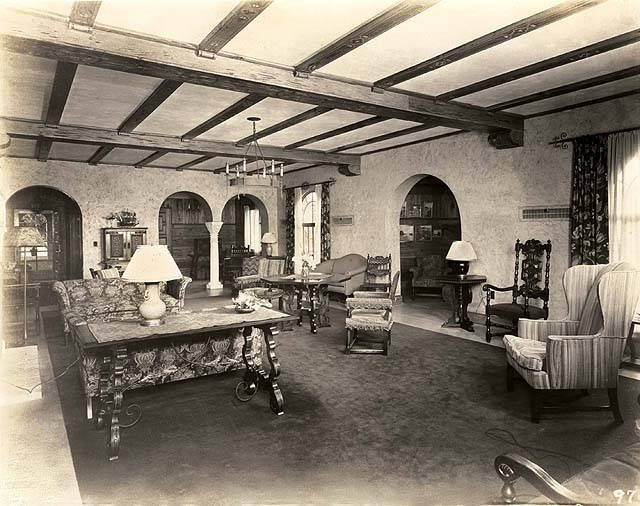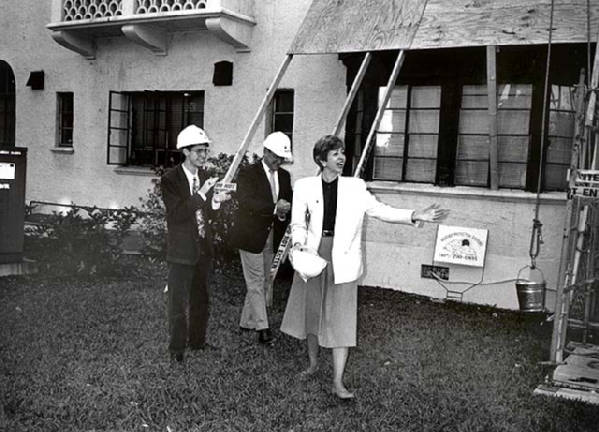Mayflower Hall

President
Hamilton Holt (’49H) was personally responsible for the name of the new
residence hall. A block of wood, fifteen inches long, was placed in
Mayflower Hall to represent the original Mayflower ship that
carried British settlers to America in 1620. The block traces its origins
to the Plymouth area. Holt found the inspiration to give the name to the
residence hall from a trip to England in the 1920s. After a casual
encounter with the owner of a barn located twenty miles from London, he
learned about the transformation of a ship into skeleton of the barn. Upon
a careful examination of the remains of the ship to test the veracity of
the oral account of the local residents, Holt requested a piece of the Mayflower
to denote his enthusiastic discovery. The Society of Friends at Chalfont
St. Giles, Buckinghamshire, England, responded to Holt’s request by
sending the block of wood to Rollins. While construction was under way,
other donors also contributed additional artifacts related to the Mayflower.
For example, Helen Mary Cavenaugh donated a woven quilt that was
originally belonged to the Bradford family of the Mayflower.
Professor Virginia Robie gave Rollins a piece of Plymouth Rock. Mayflower
Hall is a unique building because it is the only known place that shares a
part of the history of Mayflower. The plaque that contains the
historic piece of timber reads: “It was taken from one of the beams in
the old weather-beaten barn in Chalfant, St. Giles Buckingham Shire,
England, which was constructed about 1624 from the dismantled frame of the
most famous ship in history.”

Living room in Mayflower 1932

Mayflower plaque
At a cost of nearly $49,850, Mayflower Hall was built in 1930 from a formerly anonymous gift by Mr. and Mrs. J. Malcolm Forbes. Connected by a long loggia with Pugsley Hall, the architectural design of Mayflower shows similarities with the latter, such as the colorful motifs painted on the ceilings. The first floor served the social needs of Pi Beta Phi, the first sorority to reside in the building. In 1936, the second and third floors provided living space for sixteen girls. Mayflower Hall currently houses the sorority Non Compis Mentis.

Renovation of Mayflower 1992

Mayflower 2003